Director Cal Brunker stresses strong visuals and iconic imagery in the new, sci-fi comedy movie Escape from Planet Earth.
If luck happens when preparation meets opportunity, then director Cal Brunker is one lucky guy. After working as a storyboard artist on Horton Hears A Who!, Ice Age: Continental Drift and Despicable Me, Brunker got the chance to move to Vancouver, Canada, and join Rainmaker Entertainment to direct The Weinstein Company’s animated feature Escape from Planet Earth.
“I’d also been working towards doing features by directing commercials,” Brunker explains. “When the opportunity came up, I jumped at it.”
Escape from Planet Earth certainly gave Brunker the challenge he was waiting for. The 3-D CG film features a stellar cast of voice talent, including Sarah Jessica Parker, Jessica Alba, Brendan Fraser, William Shatner, Craig Robinson and Rob Corddry. Brunker, collaborating with writing partner Bob Barlen, also got a chance to pen the script, which was based on an original screenplay by Tony Leech and Cory Edwards. Escape chronicles the adventures of a daring blue astronaut from the planet Baab who gets caught in America’s mysterious Area 51—triggering an interplanetary rescue mission of comic proportions.
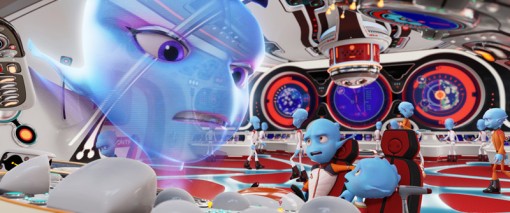
“My background was in story, so it seemed like a natural fit,” Brunker observes. “I came on to the project with a very small team of story artists and editors to get reels up to a point where The Weinstein Company could greenlight the film.”
Taking advantage of this opportunity meant moving from Toronto, where Brunker had established himself as a director of animated spots through indie animation shop Red Rover Studios. He had previously worked at Blue Sky on Horton but felt he needed to build a directing reel to be ready to tackle feature film opportunities. While in Toronto, Brunker also took advantage of today’s networked world by continuing to create storyboards as a freelancer—working remotely for Blue Sky on Ice Age: Continental Drift and for Illumination Entertainment on Despicable Me. It enabled him to keep his hand— literally—in feature animation.
Having background as a story artist is something Brunker believes was invaluable in making the leap to writing and directing.
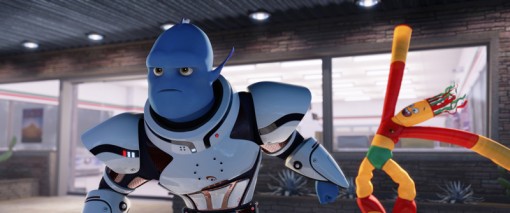
“I think that what is best for most movies—certainly for animated ones—is to find iconic images and work towards them, starting at a script stage. So by the time you get to storyboards, the opportunities are there for great moments.”
On Escape from Planet Earth, Brunker was extremely specific with Rainmaker’s animators about the film’s iconic moments.
“I would frequently draw a panel and say to the storyboard team: ‘Get me to here. I need to end up in that moment.’ The team then had the freedom to work out how to get there.”
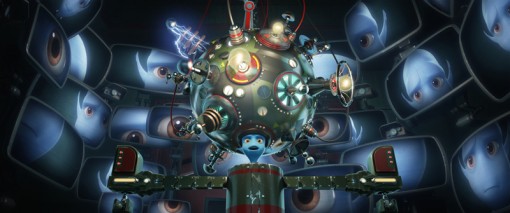
Brunker’s approach underscores a key aspect of what he brought to Escape from Planet Earth—he’s a director who can draw.
“Nothing expresses a visual idea better than a drawing,” he asserts. “It was something I reached for all the time.” What he literally reached for during this production was a piece of acetate that could be placed over the animators’ computer monitors, allowing him to draw over the images onscreen. “We have technology to draw over animation in the computer,” Brunker acknowledges. “But for me, the down-and-dirty approach was best. By drawing on the screen, the animators got the ideas right away.”
The director, who had studied hand-drawn animation at Canada’s renowned Sheridan College, is a strong believer in the importance of being well versed in 2D.
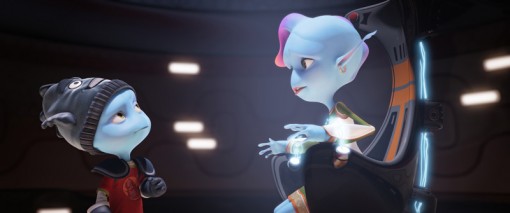
“Young people trying to get into this business should not skip that part of their education. Because ultimately, we’re arranging things on a 2D plane and all the skills of drawing come through, even in 3D.”
“You’re trying to force the graphic nature of a 2D drawing into 3D characters,” Brunker remarks. “So we tried to push our character rigs and models into doing stuff graphically in this film.” Which is not to say that Brunker went too deeply into using toon techniques like squash and stretch for Escape. “Squash and stretch is there in our animation. But in CG, if you want the jeopardy and the characters to feel real, you have to ground things in reality. If you push the squash and stretch too much, people start to think of it as a Saturday morning cartoon, where nobody could get hurt and the threats aren’t real. Our characters end up in real jeopardy and we want the audience to care about them, and so our whole animation approach supports that idea.”
“We’d look at a scene and say: ‘You want to feel squash and stretch. You don’t want to see squash and stretch.’ If we could see it, it had to come back a little bit. But if we could feel it, that was perfect. It just helped add a sense of fun to the animation without calling attention to itself. We have alien body parts that we could bend, and other parts that had to be solid—with the idea that underneath, there’s a beating heart.”
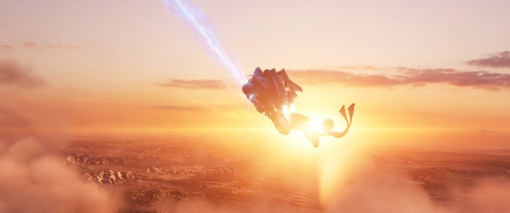
Nuking It With Pizzazz
To animate Escape from Planet Earth, Rainmaker used Autodesk Maya and relied on The Foundry’s Nuke for compositing.
“We did a lot in compositing,” says Brunker, who credits compositing supervisor Jasper Kidd with using Nuke to create one of the film’s signature sequences. “It takes place above the Nevada desert, and we needed to see for miles and miles. There were hills and mountains that would have been very difficult to create in 3D, so Jasper found a way to do it in compositing using 3D cameras. That brought the whole sequence to life.”
It’s worth remembering that Nuke was originally developed at the visual effects house Digital Domain, and in a space adventure like Escape, there are visual effects like tractor beams and time warps.
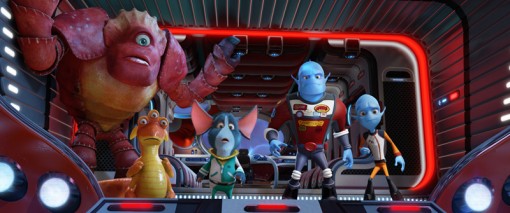
“There’s always a challenge doing visual effects in an animated film,” says Brunker. “It’s very difficult to art direct effects because the process is one where you’re adjusting parameters in the computer to get an effect like gravity. It can be like going down the rabbit hole to try and get an exact look. The key for us was to be able to answer the questions: ‘Does this effect fit in the world of our movie, and does it add emotional impact to the story?’ If we could answer ‘Yes,’ to both questions, then if something was 10 percent different from the concept painting we were trying to match, that was alright.”
One challenge on Escape that was totally new for Brunker was stereoscopy, since the film would be shown in 3-D as well as 2D.
“I wanted to make sure that the 3-D always served the story,” he says. Rainmaker worked with Montreal-based company Solid MTL to do what Brunker says was technically a 3-D conversion. “But it was done in a unique way. Every scene was painstakingly separated into dozens and dozens of layers. 3-D was not an afterthought.”
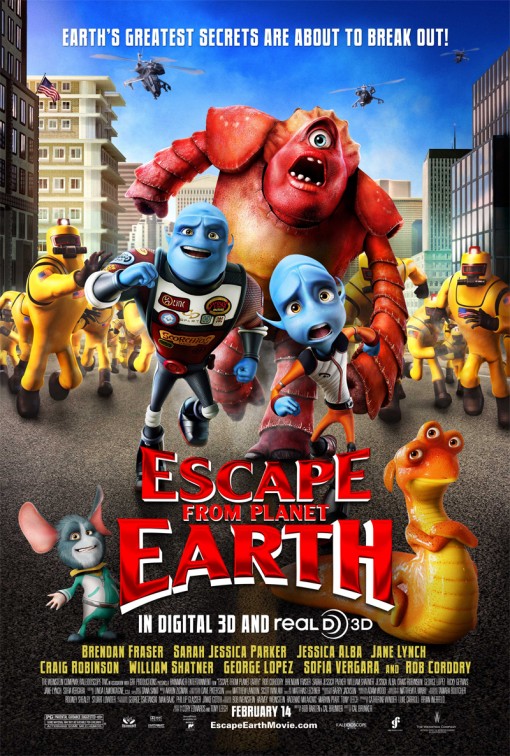
Overseeing the work of Rainmaker’s 120-person production team on Escape from Planet Earth was ultimately the biggest new challenge for this fledgling feature director.
Brunker admits, “When a movie like this gets up to full speed, there’s a lot of throughput, with many minutes every week spent going through every department. That forces you to think on your feet, and get it right the first time. It’s very expensive to get it wrong!”
The Weinstein Co. will release Escape from Planet Earth in U.S. theaters on February 15 and in various international territories in early spring.












